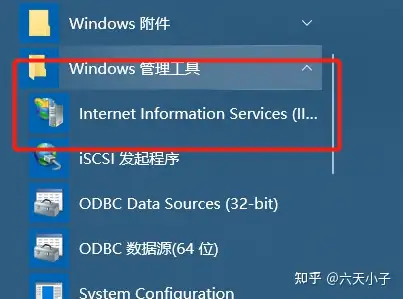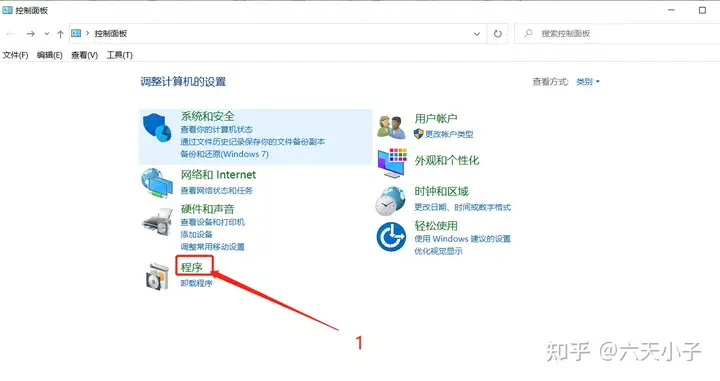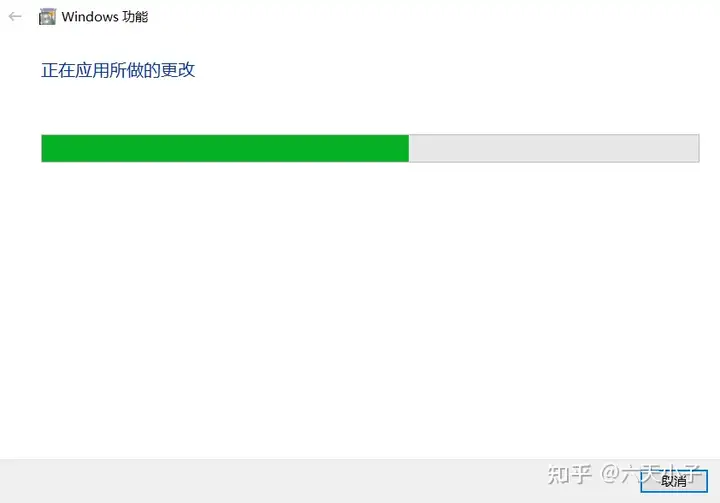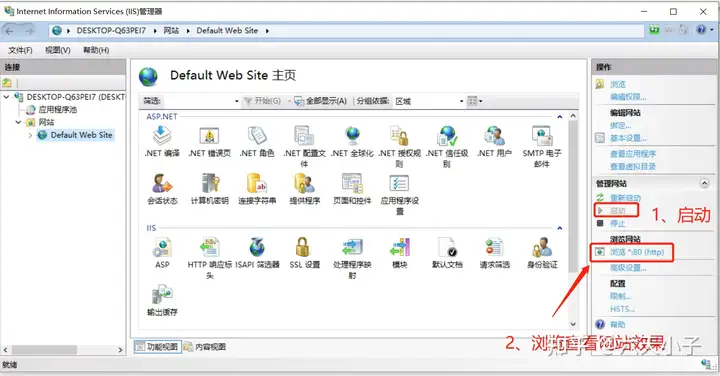44 KiB
title, date, author, top_img
| title | date | author | top_img |
|---|---|---|---|
| ASP.NET Core | 2021-03-23 10:30:31 | 文永达 | https://gcore.jsdelivr.net/gh/volantis-x/cdn-wallpaper/abstract/67239FBB-E15D-4F4F-8EE8-0F1C9F3C4E7C.jpeg |
IDE智能提示优化
.Net6 的汉化
本地化xml生成工具
工具以dotnet cli发布,使用dotnet tool进行安装
dotnet tool install -g islocalizer
.net6的汉化包已经有现成的了,可以直接进行安装
islocalizer install auto -m net6.0 -l zh-cn
工具会自动从github下载对应的包进行安装(可能需要访问加速)。
也可以通过-cc参数指定内容对照类型
OriginFirst: 原始内容在前LocaleFirst: 本地化内容在前None: 没有对照
islocalizer install auto -m net6.0 -l zh-cn -cc OriginFirst
自定义生成
如下示例生成.net6的原始内容在前的zh-cn本地化包,并使用 --------- 分隔原文和本地化内容,生成完成后的包路径会输出到控制台。
可以通过 islocalizer build -h 查看更多的构建参数信息。
首次构建过程可能非常缓慢(需要爬取所有的页面),相关文件会被缓存(单zh-cn内容大小约3.5G),再次构建时会比较快;
安装
islocalizer install {包路径}
包路径为build命令完成后输出的路径。
可以通过 islocalizer -h 查看更多的命令帮助。
Web API 项目初始化搭建
首先打开Visual Studio 2022,然后选择创建新项目
之后筛选下拉框选择如红框标注
起一个项目名称及选择项目位置,下一步
框架选择.Net 6.0(长期支持)
选择启用Docker,为了之后可以部署到Docker容器
启用OpenAPI支持是为了可以输出Swagger接口文档,但如果使用Furion框架的话,需要勾掉
顶级语句是无需在Program.cs中显式包含Main方法,可以使用顶级语句功能最大程度地减少必须编写的代码
点击创建即可
集成Furion框架
在NuGet包管理器中搜索 Furion
选择安装的项目,然后安装即可
Program.cs配置
var builder = WebApplication.CreateBuilder(args).Inject();
builder.Services.AddControllers().AddInject();
app.UseInject();
可能遇到的问题
包降级
将提示的NuGet包升级到 前者的版本即可,比如图内的 Swashbuckle.AspNetCore 原有的版本是 6.2.3 那么升级到 6.5.0即可
部署到Docker
安装.Net SDK 6.0环境
sudo rpm -Uvh https://packages.microsoft.com/config/centos/7/packages-microsoft-prod.rpm
sudo yum install dotnet-sdk-6.0
dotnet --info
Visual Studio添加Docker支持
Linux下构建Docker镜像
docker image build -f ./XiaodaERP/Dockerfile -t aspnetcore .
docker images
运行Docker镜像
docker run --name=aspnetcore -p 9001:80 -d aspnetcore
docker ps
cd /usr/local/jenkins_home/workspace/XiaodaERP_NetCore
echo $PWD
docker image build -f ./XiaodaERP/Dockerfile -t xiaodaerp/netcore .
docker images
docker run --name xiaodaerp/netcore -p 7274:80 -d xiaodaerp/netcore
部署到 IIS
IIS 介绍
Internet Information Services (IIS) 是一种灵活、安全且可管理的 Web 服务器,用于托管 Web 应用(包括 ASP.NET Core)。
IIS 配置并安装
-
选择Internet Information Services 安装 IIS
注意:无需选中"设置"下的所有Internet Information Services,按照自己的需要选择安装即可
第一次安装时间比较久,耐心等待一会。
可能需要重启。
-
验证 IIS 是否安装配置成功 找到Windows管理工具 => 打开IIS
 运行 IIS 默认的 Default Web Site 查看是否正常
运行 IIS 默认的 Default Web Site 查看是否正常在C:\inetpub\wwwroot下IIS默认绑定了一个80端口的静态页面站点,我们将该站点浏览起来查看页面效果是否正常。 站点地址:http://localhost:80
访问成功
安装 ASP.Net Core 模块/托管捆绑包
使用以下链接下载最新安装程序:
重新启动 IIS
安装托管捆绑包后,可能需要手动重新启动 IIS。 例如,在运行 IIS 工作进程的路径上可能不存在 dotnet CLI 工具(命令)。
若要手动重启 IIS,请停止 Windows 进程激活服务 (WAS),然后重新启动 World Wide Web 发布服务 (W3SVC) 和所有相关服务。 在高级命令 shell 中执行以下命令:
net stop was /y
net start w3svc
安装完成后,打开如下页面,打开IIS管理器
选择左侧数的根目录后,在右侧选择模块,如下图所示。
安装完成后在模块中会显示AspNetCoreModuleV2模块
添加网站
网站=>右键添加网站
在上图中,我们创建了一个网站名为:RDICoreWeb50,并指定了到我们网站的发布路径。
这儿最重要的一步就是要设置网站的“应用程序池”。
在IIS左侧选择“应用程序池”,在右则可以看到我们网站使用的“RDICoreWeb50”,双击打开,并做如图配置:
报错解决
请求筛选模块被配置为拒绝包含的查询字符串过长的请求
ASP中配置行为 => 限制属性 => 最大请求实体主体限制 1073741824
配置编辑器中选择节 => system.webServer/serverRuntime
配置maxRequestEntityAllowed和uploadReadAheadSize 1073741824
项目目录web.config配置
<?xml version="1.0" encoding="utf-8"?>
<configuration>
<location path="." inheritInChildApplications="false">
<system.webServer>
<handlers>
<add name="aspNetCore" path="*" verb="*" modules="AspNetCoreModuleV2" resourceType="Unspecified" />
</handlers>
<aspNetCore processPath="dotnet" arguments=".\ZR.Admin.WebApi.dll" stdoutLogEnabled="false" stdoutLogFile=".\logs\stdout" hostingModel="inprocess" />
</system.webServer>
</location>
<system.webServer>
<security>
<requestFiltering>
<requestLimits maxQueryString="2097151" maxAllowedContentLength="1073741824" />
</requestFiltering>
</security>
</system.webServer>
</configuration>
托管到 Nginx
配置
#user nobody;
worker_processes 1;
#error_log logs/error.log;
#error_log logs/error.log notice;
#error_log logs/error.log info;
#pid logs/nginx.pid;
events {
worker_connections 1024;
}
http {
include mime.types;
default_type application/octet-stream;
#log_format main '$remote_addr - $remote_user [$time_local] "$request" '
# '$status $body_bytes_sent "$http_referer" '
# '"$http_user_agent" "$http_x_forwarded_for"';
#access_log logs/access.log main;
sendfile on;
#tcp_nopush on;
#keepalive_timeout 0;
keepalive_timeout 65;
#gzip on;
# map $http_upgrade $connection_upgrade {
# default upgrade;
# '' close;
# }
map $http_connection $connection_upgrade {
"~*Upgrade" $http_connection;
default keep-alive;
}
server {
listen 7779;
server_name localhost;
#charset koi8-r;
#access_log logs/host.access.log main;
#location / {
# root html;
# index index.html index.htm;
#}
root html/dist;
index index.html index.htm;
# 根请求会指向的页面
location / {
# 此处的 @router 实际上是引用下面的转发,否则在 Vue 路由刷新时可能会抛出 404
try_files $uri $uri/ @router;
# 请求指向的首页
index index.html;
}
location @router {
rewrite ^.*$ /index.html last;
}
#error_page 404 /404.html;
# redirect server error pages to the static page /50x.html
#
#error_page 500 502 503 504 /50x.html;
#location = /50x.html {
# root html;
#}
location /prod-api {
proxy_set_header Host $http_host;
proxy_set_header X-Real-IP $remote_addr;
#proxy_set_header REMOTE-HOST $remote_addr;
proxy_set_header X-Forwarded-For $proxy_add_x_forwarded_for;
proxy_set_header Cookie $http_cookie;
proxy_pass http://127.0.0.1:50;
proxy_redirect off;
proxy_set_header HTTP-X-REQUESTED-WITH $http_x_requested_with;
proxy_set_header HTTP_X_REQUESTED_WITH $http_x_requested_with;
proxy_set_header x-requested-with $http_x_requested_with;
client_max_body_size 10m;
client_body_buffer_size 128k;
proxy_connect_timeout 90;
proxy_send_timeout 90;
proxy_read_timeout 90;
proxy_buffer_size 128k;
proxy_buffers 32 32k;
proxy_busy_buffers_size 128k;
proxy_temp_file_write_size 128k;
rewrite ^/prod-api/(.*) /$1 break;
}
location /msghub {
proxy_pass http://127.0.0.1:50/msgHub;
# Configuration for WebSockets
proxy_set_header Upgrade $http_upgrade;
proxy_set_header Connection $connection_upgrade;
proxy_cache off;
# WebSockets were implemented after http/1.0
proxy_http_version 1.1;
# Configuration for ServerSentEvents
proxy_buffering off;
# Configuration for LongPolling or if your KeepAliveInterval is longer than 60 seconds
proxy_read_timeout 100s;
proxy_set_header Host $host;
proxy_set_header X-Forwarded-For $proxy_add_x_forwarded_for;
proxy_set_header X-Forwarded-Proto $scheme;
}
# proxy the PHP scripts to Apache listening on 127.0.0.1:80
#
#location ~ \.php$ {
# proxy_pass http://127.0.0.1;
#}
# pass the PHP scripts to FastCGI server listening on 127.0.0.1:9000
#
#location ~ \.php$ {
# root html;
# fastcgi_pass 127.0.0.1:9000;
# fastcgi_index index.php;
# fastcgi_param SCRIPT_FILENAME /scripts$fastcgi_script_name;
# include fastcgi_params;
#}
# deny access to .htaccess files, if Apache's document root
# concurs with nginx's one
#
#location ~ /\.ht {
# deny all;
#}
}
# another virtual host using mix of IP-, name-, and port-based configuration
#
#server {
# listen 8000;
# listen somename:8080;
# server_name somename alias another.alias;
# location / {
# root html;
# index index.html index.htm;
# }
#}
# HTTPS server
#
#server {
# listen 443 ssl;
# server_name localhost;
# ssl_certificate cert.pem;
# ssl_certificate_key cert.key;
# ssl_session_cache shared:SSL:1m;
# ssl_session_timeout 5m;
# ssl_ciphers HIGH:!aNULL:!MD5;
# ssl_prefer_server_ciphers on;
# location / {
# root html;
# index index.html index.htm;
# }
#}
}
其中有两个map块
-
第一个
map块:map $http_upgrade $connection_upgrade { default upgrade; '' close; }- 如果
$http_upgrade的值与default不匹配(通常是指$http_upgrade未设置或未匹配任何其他条件),则将$connection_upgrade设置为upgrade。 - 如果
$http_upgrade的值为空字符串(''),则将$connection_upgrade设置为close。这意味着Nginx将关闭连接而不是升级。
- 如果
-
第二个
map块(微软官方用法):map $http_connection $connection_upgrade { "~*Upgrade" $http_connection; default keep-alive; }- 如果
$http_connection的值匹配正则表达式~*Upgrade(不区分大小写地匹配包含"Upgrade"的值),则将$connection_upgrade设置为$http_connection的值,通常是upgrade。 - 如果没有匹配的值,将
$connection_upgrade设置为keep-alive。这意味着Nginx将保持HTTP连接保持活动状态以进行进一步的请求和响应。
- 如果
总的来说,这两个map块都涉及控制HTTP升级的行为,但它们使用不同的条件来决定何时将$connection_upgrade设置为upgrade或close。第一个map块根据$http_upgrade的值设置,而第二个map块根据$http_connection的值设置,通过正则表达式检查是否包含"Upgrade"。
顶级语句配置 Program.cs
取消默认JSON首字母小写命名
builder.Services.AddControllers().AddJsonOptions(options => {
options.JsonSerializerOptions.PropertyNamingPolicy = null;
});
Json序列化时忽略属性为null的值
builder.Services.AddControllers().AddJsonOptions(options => {
options.JsonSerializerOptions.DefaultIgnoreCondition = JsonIgnoreCondition.WhenWritingNull;
});
Json序列化时日期类型格式化输出
builder.Services.AddControllers().AddJsonOptions(options =>
{
options.JsonSerializerOptions.Converters.Add(new SystemTextJsonDateTimeJsonConverter("yyyy-MM-dd HH:mm:ss"));
});
使用Autofac自动注入Service
通过NuGet包管理器 安装NuGet包
Autofac
Autofac.Extensions.DependencyInjection
Autofac.Extras.DynamicProxy
新建 ServiceAutofac.cs类
using System.Reflection;
namespace XiaodaERP
{
public class ServiceAutofac
{
/// <summary>
/// 获取程序集名称
/// </summary>
/// <returns></returns>
public static string GetAssemblyName()
{
return Assembly.GetExecutingAssembly().GetName().Name;
}
}
}
Program.cs配置
builder.Host.UseServiceProviderFactory(new AutofacServiceProviderFactory());
builder.Host.ConfigureContainer<ContainerBuilder>(builder =>
{
Assembly assembly = Assembly.Load(ServiceAutofac.GetAssemblyName());//注入Service程序集 可以是其他程序集
builder.RegisterAssemblyTypes(assembly)
.AsImplementedInterfaces()
.InstancePerDependency();
});
注入Entity Framework Core 6 DbContext上下文
builder.Services.AddDbContext<OracleDbContext>(options =>
options.UseOracle(builder.Configuration.GetConnectionString("OracleDbContext")));
builder.Services.AddDbContext<SqlServerDbContext>(options => options.UseSqlServer(builder.Configuration.GetConnectionString("SqlServerDbContext")));
使用JWT进行授权与认证
安装NuGet包
Microsoft.AspNetCore.Authentication.JwtBearer
appsettings.json配置文件中配置
"Authentication": {
"SecretKey": "nadjhfgkadshgoihfkajhkjdhsfaidkuahfhdksjaghidshyaukfhdjks",
"Issuer": "www.xiaoda",
"Audience": "www.xiaoda"
}
Program.cs顶级语句配置
// 使用Autofac自动注入Service
builder.Host.UseServiceProviderFactory(new AutofacServiceProviderFactory());
builder.Host.ConfigureContainer<ContainerBuilder>(builder =>
{
Assembly assembly = Assembly.Load(ServiceAutofac.GetAssemblyName());//注入Service程序集 可以是其他程序集
builder.RegisterAssemblyTypes(assembly)
.AsImplementedInterfaces()
.InstancePerDependency();
// 在IOC容器中注入
// 用于Jwt的各种操作
builder.RegisterType<JwtSecurityTokenHandler>().InstancePerLifetimeScope();
// 支持泛型存入Jwt
builder.RegisterType<TokenHelper>().InstancePerLifetimeScope();
});
//JWT认证
builder.Services.AddAuthentication(JwtBearerDefaults.AuthenticationScheme).AddJwtBearer(options =>
{
//取出私钥
var secretByte = Encoding.UTF8.GetBytes(builder.Configuration["Authentication:SecretKey"]);
options.TokenValidationParameters = new TokenValidationParameters()
{
//验证发布者
ValidateIssuer = true,
ValidIssuer = builder.Configuration["Authentication:Issuer"],
//验证接受者
ValidateAudience = true,
ValidAudience = builder.Configuration["Authentication:Audience"],
//验证是否过期
ValidateLifetime = true,
//验证私钥
IssuerSigningKey = new SymmetricSecurityKey(secretByte)
};
});
// 顺序不能颠倒
// 你是谁 授权
app.UseAuthentication();
// 你可以干什么 验证
app.UseAuthorization();
新建 TokenHelper.cs工具类
using Microsoft.IdentityModel.Tokens;
using System.IdentityModel.Tokens.Jwt;
using System.Reflection;
using System.Security.Claims;
using System.Text;
using XiaodaERP.Models;
namespace XiaodaERP.Utils
{
public class TokenHelper
{
private readonly IConfiguration _configuration;
private readonly JwtSecurityTokenHandler _jwtSecurityTokenHandler;
public TokenHelper(IConfiguration configuration, JwtSecurityTokenHandler jwtSecurityTokenHandler)
{
this._configuration = configuration;
this._jwtSecurityTokenHandler = jwtSecurityTokenHandler;
}
public static string? Token { get; set; }
// 生成Token
public string CreateJwtToken<T>(T user)
{
// 生成JWT
// Header,选择签名算法
var signingAlogorithm = SecurityAlgorithms.HmacSha256;
// Payload,存放用户信息,放用户ID,用户名
var claimList = this.CreateClaimList(user);
//Signature
//取出私钥并以utf8编码字节输出
var secretByte = Encoding.UTF8.GetBytes(_configuration["Authentication:SecretKey"]);
//使用非对称算法对私钥进行加密
var signingKey = new SymmetricSecurityKey(secretByte);
//使用HmacSha256来验证加密后的私钥生成数字签名
var signingCredentials = new SigningCredentials(signingKey, signingAlogorithm);
//生成Token
var Token = new JwtSecurityToken(
issuer: _configuration["Authentication:Issuer"], //发布者
audience: _configuration["Authentication:Audience"], //接收者
claims: claimList, //存放的用户信息
notBefore: DateTime.UtcNow, //发布时间
expires: DateTime.UtcNow.AddMinutes(30), //有效期设置为1天
signingCredentials //数字签名
);
//生成字符串token
var TokenStr = new JwtSecurityTokenHandler().WriteToken(Token);
return TokenStr;
}
// 获取Token Payload信息
public T GetToken<T>(string token)
{
Type t = typeof(T);
object obj = Activator.CreateInstance(t);
var b = _jwtSecurityTokenHandler.ReadJwtToken(token);
foreach (var item in b.Claims)
{
PropertyInfo propertyInfo = t.GetProperty(item.Type);
if (propertyInfo != null && propertyInfo.CanRead)
{
propertyInfo.SetValue(obj, item.Value, null);
}
}
return (T)obj;
}
// 根据类生成Token 断言列表
private List<Claim> CreateClaimList<T>(T authUser)
{
var Class = typeof(T);
List<Claim> claimList = new();
foreach (var item in Class.GetProperties())
{
// 不将PassWord放入Token中
if (item.Name == "PassWord")
{
continue;
}
// 将UserName属性名重命名为username存入Token中
if (item.Name == "UserName")
{
claimList.Add(new Claim("username", Convert.ToString(item.GetValue(authUser))));
continue;
}
claimList.Add(new Claim(item.Name, Convert.ToString(item.GetValue(authUser))));
}
return claimList;
}
}
}
在登录方法中加入
public ViewUser Login(string UserName, string PassWord)
{
var res = _sqlServerDbContext.Users.Include(user => user.Role).FirstOrDefault(x => x.UserName == UserName);
if (res != null)
{
if (res.PassWord == Md5Encoding(PassWord))
{
// 生成JWT
var TokenStr = _tokenHelper.CreateJwtToken(res);
var config = new MapperConfiguration(cfg => cfg.CreateMap<User, ViewUser>()
.ForMember(d => d.username, opt => opt.MapFrom(src => src.UserName))
.AfterMap((src, des) => des.Roles = new Role[1] { src.Role })
.AfterMap((src, des) => des.Token = "bearer " + TokenStr) // 需要加上bearer
.AfterMap((src, des) => des.HomePath = "/dashboard/analysis")
.AfterMap((src, des) => des.password = null));
var mapper = config.CreateMapper();
return mapper.Map<ViewUser>(res);
}
}
return null;
}
WebAPI 需要认证的加上 [Authorize]注解,注意登录不能加
[AuthFilter]
[HttpPost(Name = "login")]
public ResultUtil Login(ViewUser viewUser) =>
ResultUtil.ok(_userService.Login(viewUser.username, viewUser.password));
// 需要认证的API
[Authorize]
[AuthFilter]
[HttpGet(Name = "getUserInfo")]
public ResultUtil GetUserInfo()
{
Token = HttpContext.Request.Headers["Authorization"];
Token = Token.Split(" ")[1];
TokenHelper.Token = Token;
ViewUser us = _tokenHelper.GetToken<ViewUser>(Token);
return ResultUtil.ok(us);
}
访问登录接口
访问需要认证的接口,需要把Token放在请求头中,如果不携带Token,访问则报401
请求头Key 为 Authorization
访问成功
三大拦截器
认证拦截器 AuthorizeAttribute
方法拦截器 ActionFilterAttribute
using Microsoft.AspNetCore.Mvc.Controllers;
using Microsoft.AspNetCore.Mvc.Filters;
using Newtonsoft.Json;
using Newtonsoft.Json.Linq;
using System.IdentityModel.Tokens.Jwt;
using Castle.Core.Internal;
using XiaodaERP.Models;
using XiaodaERP.Utils;
using Microsoft.EntityFrameworkCore;
using Microsoft.Extensions.Options;
namespace XiaodaERP.Attributes
{
public class AuthFilter : ActionFilterAttribute
{
//private readonly TokenHelper _tokenHelper;
//public AuthFilter(TokenHelper tokenHelper)
//{
// this._tokenHelper = tokenHelper;
//}
private readonly SqlServerDbContext _sqlServerDbContext;
public AuthFilter(SqlServerDbContext sqlServerDbContext)
{
this._sqlServerDbContext = sqlServerDbContext;
}
private SysActionLog sysActionLog = new()
{
ActionId = Guid.NewGuid().ToString().Replace("-", "").ToUpper()
};
public override void OnActionExecuting(ActionExecutingContext context)
{
var descriptor = context.ActionDescriptor as ControllerActionDescriptor;
string param = string.Empty;
string globalParam = string.Empty;
var jsonSetting = new JsonSerializerSettings { NullValueHandling = NullValueHandling.Ignore };
foreach (var arg in context.ActionArguments)
{
string value = Newtonsoft.Json.JsonConvert.SerializeObject(arg.Value, Formatting.None, jsonSetting);
param += $"{arg.Key} : {value} \r\n";
globalParam += value;
}
// 方法名
Console.WriteLine(descriptor.ActionName);
// 参数值拼接
Console.WriteLine(globalParam);
// 参数名 与 值
Console.WriteLine(param);
sysActionLog.ActionName = descriptor.ActionName;
sysActionLog.RequestParams = param;
}
public override void OnActionExecuted(ActionExecutedContext context)
{
// 获取请求Host
Console.WriteLine(context.HttpContext.Request.Host);
sysActionLog.RequestHost = context.HttpContext.Request.Host.ToString();
// 获取请求方法
Console.WriteLine(context.HttpContext.Request.Method);
sysActionLog.RequestMethod = context.HttpContext.Request.Method;
// 获取请求Url
Console.WriteLine(context.HttpContext.Request.Path);
sysActionLog.RequestPath = context.HttpContext.Request.Path.ToString();
// 获取应答返回状态码
Console.WriteLine(context.HttpContext.Response.StatusCode);
if (context.HttpContext.Request.Path.Equals("/api/User/login"))
{
sysActionLog.ActionTime = DateTime.Now;
}
else
{
string Token = context.HttpContext.Request.Headers["Authorization"];
// Token失效
if (Token.IsNullOrEmpty())
{
}
else
{
Token = Token.Split(" ")[1];
TokenHelper.Token = Token;
ViewUser us = new TokenHelper(new JwtSecurityTokenHandler()).GetToken<ViewUser>(Token);
Console.WriteLine(us.UserId);
sysActionLog.ActionUserId = us.UserId;
Console.WriteLine(us.username);
sysActionLog.ActionUserName = us.username;
}
sysActionLog.ActionTime = DateTime.Now;
}
_sqlServerDbContext.SysActionLogs.Add(sysActionLog);
_sqlServerDbContext.SaveChanges();
}
}
}
接口上使用
//[AuthFilter]
[TypeFilter(typeof(AuthFilter))]
[HttpPost(Name = "login")]
public ResultUtil Login(ViewUser viewUser) =>
ResultUtil.ok(_userService.Login(viewUser.username, viewUser.password));
[Authorize]
//[AuthFilter] // 注解为拦截器类名
[TypeFilter(typeof(AuthFilter))] // 因为主键中使用了构造器依赖注入,所以需要使用TypeFilter,并需要在顶级语句中注入 AuthFilter
[HttpGet(Name = "getUserInfo")]
public ResultUtil GetUserInfo()
{
Token = HttpContext.Request.Headers["Authorization"];
Token = Token.Split(" ")[1];
TokenHelper.Token = Token;
ViewUser us = _tokenHelper.GetToken<ViewUser>(Token);
return ResultUtil.ok(us);
}
顶级语句中注入
builder.Services.AddScoped<AuthFilter>();
异常拦截器 ExceptionFilterAttribute
AspNetCoreRateLimit 速率限制
介绍
AspNetCoreRateLimit是一个ASP.NET Core速率限制的解决方案,旨在控制客户端根据IP地址或客户端ID向Web API或MVC应用发出的请求的速率。AspNetCoreRateLimit包含一个IpRateLimitMiddleware和ClientRateLimitMiddleware,每个中间件可以根据不同的场景配置限制允许IP或客户端,自定义这些限制策略,也可以将限制策略应用在每个API URL或具体的HTTP Method上。
使用
由上面介绍可知AspNetCoreRateLimit支持了两种方式:基于**客户端IP(*IpRateLimitMiddleware)*和客户端ID(*ClientRateLimitMiddleware*)速率限制 接下来就分别说明使用方式
添加Nuget包引用:
Install-Package AspNetCoreRateLimit
基于客户端IP速率限制
新建 IPRateExtension.cs
public static class IPRateExtension
{
public static void AddIPRate(this IServiceCollection services, IConfiguration configuration)
{
if (services == null) throw new ArgumentNullException(nameof(services));
//从appsettings.json中加载常规配置,IpRateLimiting与配置文件中节点对应
services.Configure<IpRateLimitOptions>(configuration.GetSection("IpRateLimiting"));
//从appsettings.json中加载Ip规则
services.Configure<IpRateLimitPolicies>(configuration.GetSection("IpRateLimitPolicies"));
//注入计数器和规则存储
//分布式部署时,需要将速率限制计算器和ip规则存储到分布式缓存中如Redis
services.AddSingleton<IIpPolicyStore, DistributedCacheIpPolicyStore>();
services.AddSingleton<IClientPolicyStore, DistributedCacheClientPolicyStore>();
// services.AddSingleton<IIpPolicyStore, MemoryCacheIpPolicyStore>();
services.AddSingleton<IRateLimitCounterStore, DistributedCacheRateLimitCounterStore>();
// services.AddSingleton<IRateLimitCounterStore, MemoryCacheRateLimitCounterStore>();
//配置(解析器、计数器密钥生成器)
services.AddSingleton<IRateLimitConfiguration, RateLimitConfiguration>();
services.AddSingleton<IProcessingStrategy, AsyncKeyLockProcessingStrategy>();
}
}
Program.cs
builder.Services.AddSingleton<IHttpContextAccessor, HttpContextAccessor>();
//初始化限流器
builder.Services.AddIPRate(builder.Configuration);
//启用客户端IP限制速率
app.UseIpRateLimiting();
在appsettings.json中添加通用配置项节点:
"IpRateLimiting": {
//false,则全局将应用限制,并且仅应用具有作为端点的规则*。例如,如果您设置每秒5次调用的限制,则对任何端点的任何HTTP调用都将计入该限制
//true, 则限制将应用于每个端点,如{HTTP_Verb}{PATH}。例如,如果您为*:/api/values客户端设置每秒5个呼叫的限制,
"EnableEndpointRateLimiting": false,
//false,拒绝的API调用不会添加到调用次数计数器上;如 客户端每秒发出3个请求并且您设置了每秒一个调用的限制,则每分钟或每天计数器等其他限制将仅记录第一个调用,即成功的API调用。如果您希望被拒绝的API调用计入其他时间的显示(分钟,小时等) //,则必须设置StackBlockedRequests为true。
"StackBlockedRequests": false,
//Kestrel 服务器背后是一个反向代理,如果你的代理服务器使用不同的页眉然后提取客户端IP X-Real-IP使用此选项来设置
"RealIpHeader": "X-Real-IP",
//取白名单的客户端ID。如果此标头中存在客户端ID并且与ClientWhitelist中指定的值匹配,则不应用速率限制。
"ClientIdHeader": "X-ClientId",
//限制状态码
"HttpStatusCode": 429,
////IP白名单:支持Ip v4和v6
//"IpWhitelist": [ "127.0.0.1", "::1/10", "192.168.0.0/24" ],
////端点白名单
//"EndpointWhitelist": [ "get:/api/license", "*:/api/status" ],
////客户端白名单
//"ClientWhitelist": [ "dev-id-1", "dev-id-2" ],
//通用规则
"GeneralRules": [
{
//端点路径
"Endpoint": "*",
//时间段,格式:{数字}{单位};可使用单位:s, m, h, d
"Period": "1s",
//限制
"Limit": 2
}, //15分钟只能调用100次
{"Endpoint": "*","Period": "15m","Limit": 100}, //12H只能调用1000
{"Endpoint": "*","Period": "12h","Limit": 1000}, //7天只能调用10000次
{"Endpoint": "*","Period": "7d","Limit": 10000}
]
}
配置节点已添加相应注释信息。
规则设置格式:
端点格式:{HTTP_Verb}:{PATH},您可以使用asterix符号来定位任何HTTP谓词。
期间格式:{INT}{PERIOD_TYPE},您可以使用以下期间类型之一:s, m, h, d。
限制格式:{LONG}
特点Ip限制规则设置,在*appsettings.json中添加 IP规则配置节点*
"IpRateLimitPolicies": {
//ip规则
"IpRules": [
{
//IP
"Ip": "84.247.85.224",
//规则内容
"Rules": [
//1s请求10次
{"Endpoint": "*","Period": "1s","Limit": 10},
//15分钟请求200次
{"Endpoint": "*","Period": "15m","Limit": 200}
]
},
{
//ip支持设置多个
"Ip": "192.168.3.22/25",
"Rules": [
//1秒请求5次
{"Endpoint": "*","Period": "1s","Limit": 5},
//15分钟请求150次
{"Endpoint": "*","Period": "15m","Limit": 150},
//12小时请求500次
{"Endpoint": "*","Period": "12h","Limit": 500}
]
}
]
}
为使特点Ip限制规则生效,需初始化 IP 限制策略
Program.cs
using (var serviceScope = app.Services.CreateScope())
{
var services = serviceScope.ServiceProvider;
// get the IpPolicyStore instance
var ipPolicyStore = services.GetRequiredService<IIpPolicyStore>();
// seed IP data from appsettings
ipPolicyStore.SeedAsync().GetAwaiter().GetResult();
var clientPolicyStore = services.GetRequiredService<IClientPolicyStore>();
clientPolicyStore.SeedAsync().GetAwaiter().GetResult();
}
运行时更新速率限制
添加 IpRateLimitController控制器
/// <summary>
/// IP限制控制器
/// </summary>
[Route("api/[controller]")]
[ApiController]
public class IpRateLimitController : ControllerBase
{
private readonly IpRateLimitOptions _options;
private readonly IIpPolicyStore _ipPolicyStore;
public IpRateLimitController(IOptions<IpRateLimitOptions> optionsAccessor, IIpPolicyStore ipPolicyStore)
{
_options = optionsAccessor.Value;
_ipPolicyStore = ipPolicyStore;
}
[HttpGet]
public IpRateLimitPolicies Get()
{
return _ipPolicyStore.Get(_options.IpPolicyPrefix);
}
[HttpPost]
public void Post()
{
var pol = _ipPolicyStore.Get(_options.IpPolicyPrefix);
pol.IpRules.Add(new IpRateLimitPolicy
{
Ip = "8.8.4.4",
Rules = new List<RateLimitRule>(new RateLimitRule[] {
new RateLimitRule {
Endpoint = "*:/api/testupdate",
Limit = 100,
Period = "1d" }
})
});
_ipPolicyStore.Set(_options.IpPolicyPrefix, pol);
}
}
自定义 IpRateLimitMiddleware中间件
新建 CustomIpRateLimitMiddleware类并继承 IpRateLimitMiddleware
public class CustomIpRateLimitMiddleware : IpRateLimitMiddleware
{
private static readonly Logger Logger = LogManager.GetCurrentClassLogger();
private readonly IIpRateLimitLogService _ipRateLimitLogService;
public CustomIpRateLimitMiddleware(RequestDelegate next, IProcessingStrategy processingStrategy,
IOptions<IpRateLimitOptions> options, IIpPolicyStore policyStore, IRateLimitConfiguration config,
ILogger<IpRateLimitMiddleware> logger, IIpRateLimitLogService ipRateLimitLogService) : base(next, processingStrategy, options, policyStore, config, logger)
{
_ipRateLimitLogService = ipRateLimitLogService;
}
// 重写 用于记录被阻止的请求的日志
protected override void LogBlockedRequest(HttpContext httpContext, ClientRequestIdentity identity,
RateLimitCounter counter, RateLimitRule rule)
{
// base.LogBlockedRequest(httpContext, identity, counter, rule);
var nowDate = DateTime.Now;
var ipRateLimitLog = new IpRateLimitLog
{
HttpVerb = identity.HttpVerb,
Path = identity.Path,
ClientIp = identity.ClientIp,
Limit = rule.Limit,
Period = rule.Period,
Exceeded = counter.Count - rule.Limit,
Endpoint = rule.Endpoint,
CreateTime = nowDate
};
var logStr = $"请求 {ipRateLimitLog.HttpVerb}:{ipRateLimitLog.Path} 来自 IP {ipRateLimitLog.ClientIp} 已被阻止, " +
$"配额 {ipRateLimitLog.Limit}/{ipRateLimitLog.Period} 超出次数 {ipRateLimitLog.Exceeded}. " +
$"被规则 {ipRateLimitLog.Endpoint} 阻止. 时间: {ipRateLimitLog.CreateTime}";
Logger.Info(logStr);
_ipRateLimitLogService.InsertIpRateLimitLogAsync(ipRateLimitLog);
}
}
Quartz.Net 定时任务
介绍
在项目的开发过程中,难免会遇见后需要后台处理的任务,例如定时发送邮件通知、后台处理耗时的数据处理等,这个时候你就需要Quartz.Net了。
Quartz.Net是纯净的,它是一个.Net程序集,是非常流行的Java作业调度系统Quartz的C#实现。
Quartz.Net一款功能齐全的任务调度系统,从小型应用到大型企业级系统都能适用。功能齐全体现在触发器的多样性上面,即支持简单的定时器,也支持Cron表达式;即能执行重复的作业任务,也支持指定例外的日历;任务也可以是多样性的,只要继承IJob接口即可。
对于小型应用,Quartz.Net可以集成到你的系统中,对于企业级系统,它提供了Routing支持,提供了Group来组织和管理任务
使用
Hello Quartz.Net
添加Quartz.Net的引用
Install-Package Quartz -Version 3.7.0
添加引用以后,来创建一个Job类HelloQuartzJob
public class HelloQuartzJob : IJob
{
public Task Execute(IJobExecutionContext context)
{
return Task.Factory.StartNew(() =>
{
Console.WriteLine("Hello Quartz.Net");
});
}
}
这是个非常简单的Job类,它在执行时输出文本Hello Quartz.Net。
接下来,我们在程序启动时创建调度器(Scheduler),并添加HelloQuartzJob的调度:
var schedulerFactory = new StdSchedulerFactory();
var scheduler = await schedulerFactory.GetScheduler();
await scheduler.Start();
Console.WriteLine($"任务调度器已启动");
//创建作业和触发器
var jobDetail = JobBuilder.Create<HelloQuartzJob>().Build();
var trigger = TriggerBuilder.Create()
.WithSimpleSchedule(m => {
m.WithRepeatCount(3).WithIntervalInSeconds(1);
})
.Build();
//添加调度
await scheduler.ScheduleJob(jobDetail, trigger);
然后运行程序
任务调度器已启动
Hello Quartz.Net
Hello Quartz.Net
Hello Quartz.Net
Hello Quartz.Net
通过演示可以看出,要执行一个定时任务,一般需要四步:
- 创建任务调度器。调度器通常在应用程序启动时创建,一个应用程序实例通常只需要一个调度器即可。
- 创建Job和JobDetail。Job是作业的类型,描述了作业是如何执行的,这个类是由我们定义的;JobDetail是Quartz对作业的封装,它包含Job类型,以及Job在执行时用到的数据,还包括是否要持久化、是否覆盖已存在的作业等选项。
- 创建触发器。触发器描述了在何时执行作业。
- 添加调度。当完成以上三步以后,就可以对作业进行调度了。
作业:Job和JobDetail
Job是作业的类型,描述了作业是如何执行的,这个类型是由我们定义的,例如上文的HelloQuartzJob。Job实现IJob接口,而IJob接口只有一个Execute方法,参数context中包含了与当前上下文中关联的Scheduler、JobDetail、Trigger等。
一个典型的Job定义如下:
public class HelloQuartzJob : IJob
{
public Task Execute(IJobExecutionContext context)
{
return Task.Factory.StartNew(() =>
{
Console.WriteLine("Hello Quartz.Net");
})
}
}
JobData
Job不是孤立存在的,它需要执行的参数,这些参数如何传递进来呢?我们来定义一个Job类进行演示。
public class SayHelloJob : IJob
{
public string UserName { get; set; }
public Task Execute(IJobExecutionContext context)
{
return Task.Factory.StartNew(() =>
{
Console.WriteLine($"Hello {UserName}!");
})
}
}
SayHelloJob在执行时需要参数UserName,这个参数被称为JobData,Quartz.Net通过JobDataMap的方式传递参数。代码如下:
// 创建作业
var jobDetail = JobBuilder.Create<SayHelloJob>()
.SetJobData(new JobDataMap() {
new KeyValuePair<string, object>("UserName", "Tom")
}).Build();
通过JobBuilder的SetJobData方法,传入JobDataMap对象,JobDataMap对象中可以包含多个参数,这些参数可以映射到Job类的属性上。我们完善代码运行示例,可以看到如下:
任务调度器已启动
Hello Tom!
Hello Tom!
Hello Tom!
Hello Tom!
JobDetail
JobDetail是Quartz.Net对作业的封装,它包含Job类型,以及Job在执行时用到的数据,还包括是否孤立存储、请求恢复作业等选项。
JobDetail是通过JobBuilder进行创建的。例如:
var jobDetail = JobBuilder.Create<SayHelloJob>()
.SetJobData(new JobDataMap(){
new KeyValuePair<string, object>("UserName", "Tom")
})
.StoreDurably(true)
.RequestRecovery(true)
.WithIdentity("SayHelloJob-Tom", "DemoGroup")
.WithDescription("Say hello to Tom job")
.Build();
参数说明:
- SetJobData: 设置JobData
- StoreDurably: 孤立存储,指即使该JobDetail没有关联的Trigger,也会进行存储
- RequestRecovery: 请求恢复,指应用崩溃后再次启动,会重新执行该作业
- WithIdentity: 作业的描述信息
除此之外,Quartz.Net还支持两个非常有用的特性:
- DisallowConcurrentExecution: 禁止并行执行,该特性是针对JobDetail生效的
- PersistJobDataAfterExecution: 在执行完成后持久化JobData,该特性是针对Job类型生效的,意味着所有使用该Job的JobDetail都会在执行完成后持久化JobData。




























